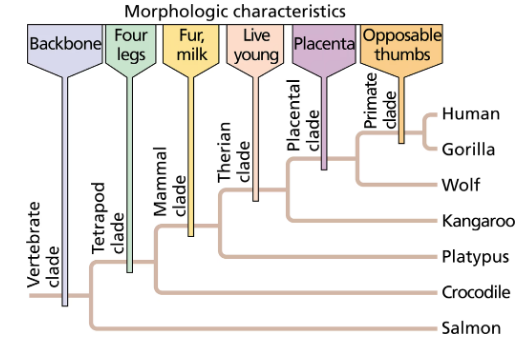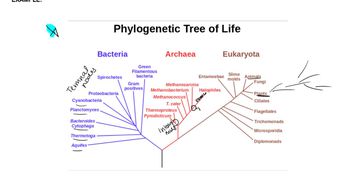The mtDNA sequence of Neanderthals is more similar to that of modern humans than to that of Denisovans. However, analyses of nuclear DNA clearly indicate that Neandertals and Denisovans share a more recent common ancestor than either of these hominins shares with modern humans. Propose a hypothesis to resolve the discrepancy between the mtDNA and the nuclear genome.
Table of contents
- 1. Introduction to Genetics51m
- 2. Mendel's Laws of Inheritance3h 37m
- 3. Extensions to Mendelian Inheritance2h 41m
- 4. Genetic Mapping and Linkage2h 28m
- 5. Genetics of Bacteria and Viruses1h 21m
- 6. Chromosomal Variation1h 48m
- 7. DNA and Chromosome Structure56m
- 8. DNA Replication1h 10m
- 9. Mitosis and Meiosis1h 34m
- 10. Transcription1h 0m
- 11. Translation58m
- 12. Gene Regulation in Prokaryotes1h 19m
- 13. Gene Regulation in Eukaryotes44m
- 14. Genetic Control of Development44m
- 15. Genomes and Genomics1h 50m
- 16. Transposable Elements47m
- 17. Mutation, Repair, and Recombination1h 6m
- 18. Molecular Genetic Tools19m
- 19. Cancer Genetics29m
- 20. Quantitative Genetics1h 26m
- 21. Population Genetics50m
- 22. Evolutionary Genetics29m
22. Evolutionary Genetics
Phylogenetic Trees
Problem 22b
Textbook Question
Examine the following figure and answer the following questions.

What characteristic is shared by all clades in the figure?
 Verified step by step guidance
Verified step by step guidance1
Examine Figure 1.17 carefully to identify the clades represented in the figure. A clade is a group of organisms that includes a common ancestor and all its descendants.
Understand that a key characteristic of clades is that they are monophyletic, meaning they include an ancestor and all of its descendants, and no other organisms.
Look for shared derived characteristics (synapomorphies) in the figure. These are traits that are unique to a particular clade and distinguish it from other groups.
Determine if the figure highlights evolutionary relationships, such as branching patterns, which indicate common ancestry among the clades.
Conclude that the shared characteristic of all clades in the figure is their inclusion of a common ancestor and all its descendants, which is a fundamental principle of clade formation in phylogenetics.
 Verified video answer for a similar problem:
Verified video answer for a similar problem:This video solution was recommended by our tutors as helpful for the problem above
Video duration:
3mPlay a video:
Was this helpful?
Key Concepts
Here are the essential concepts you must grasp in order to answer the question correctly.
Clades
A clade is a group of organisms that includes a common ancestor and all its descendants. Clades are fundamental in the study of phylogenetics, as they help illustrate evolutionary relationships. Understanding clades allows scientists to categorize species based on shared characteristics and evolutionary history.
Recommended video:
Guided course

Phylogenetic Trees
Phylogenetic Tree
A phylogenetic tree is a diagram that represents the evolutionary relationships among various biological species based on their genetic characteristics. Each branch point indicates a divergence from a common ancestor, and the arrangement of the tree reflects the evolutionary pathways. Analyzing a phylogenetic tree helps identify shared traits among clades.
Recommended video:
Guided course

Phylogenetic Trees
Shared Characteristics
Shared characteristics, or synapomorphies, are traits that are common to a group of organisms and are inherited from a common ancestor. These traits are crucial for defining clades and understanding evolutionary relationships. Identifying shared characteristics helps in determining how closely related different species are within a phylogenetic context.
Recommended video:
Guided course

Cancer Characteristics
Related Videos
Related Practice
Textbook Question
424
views


